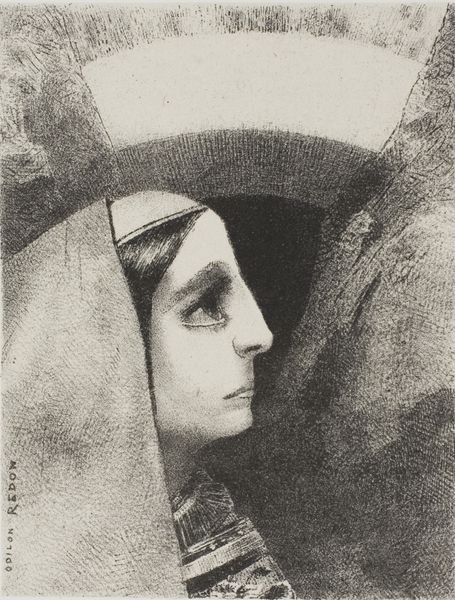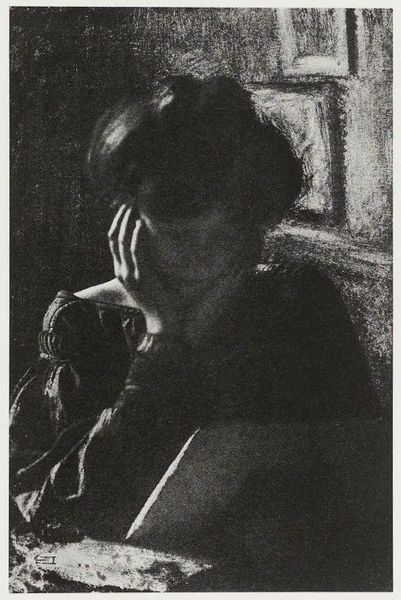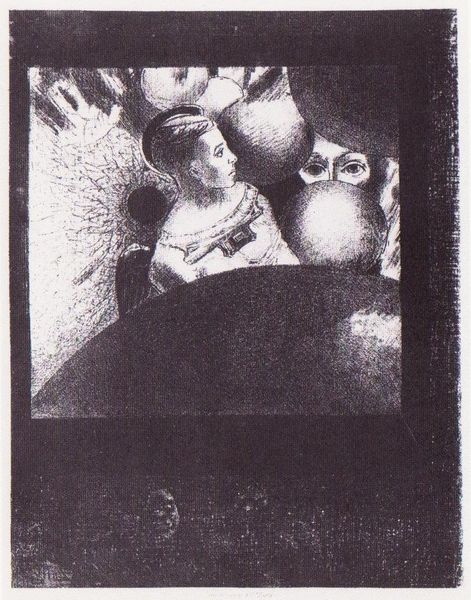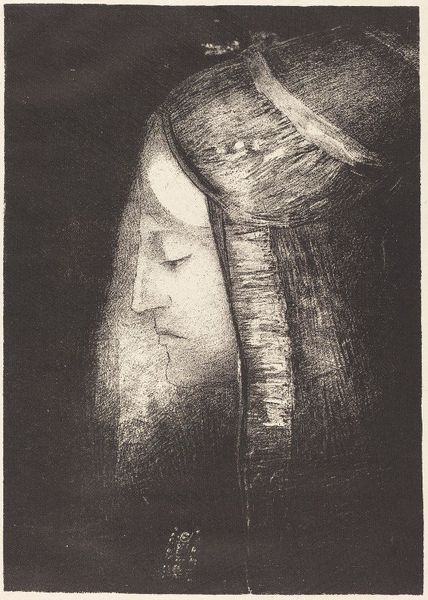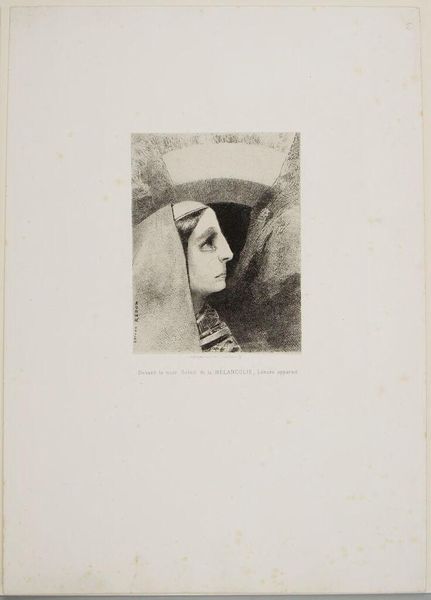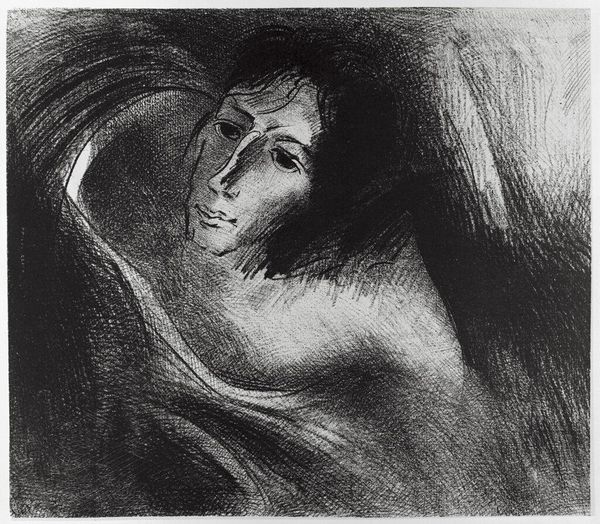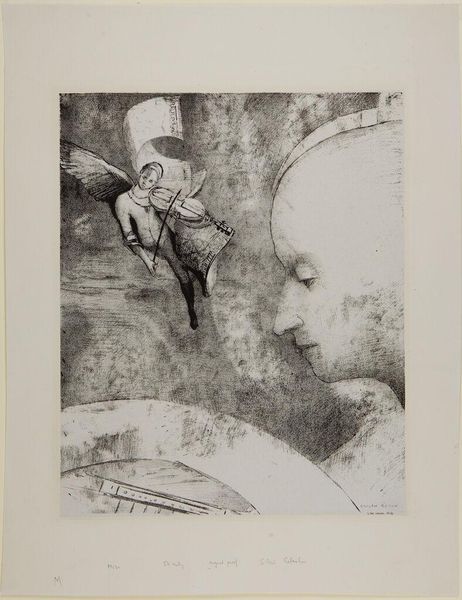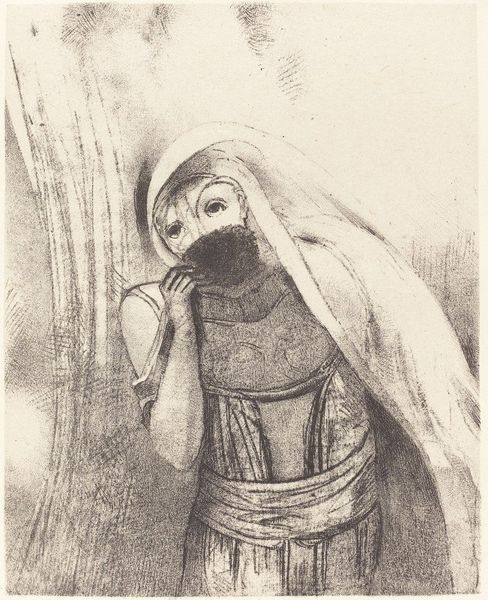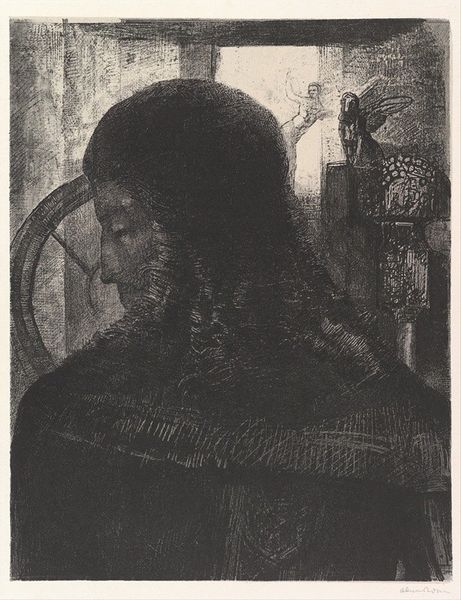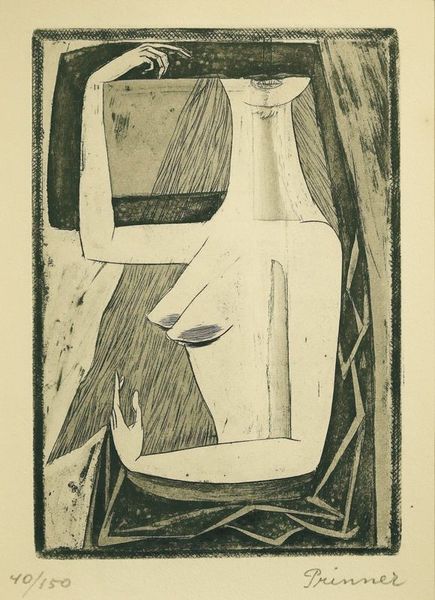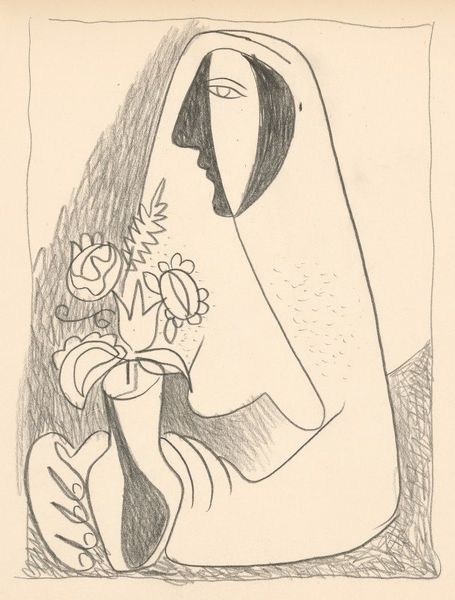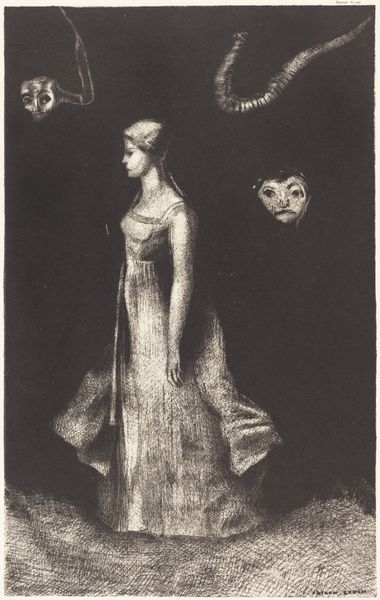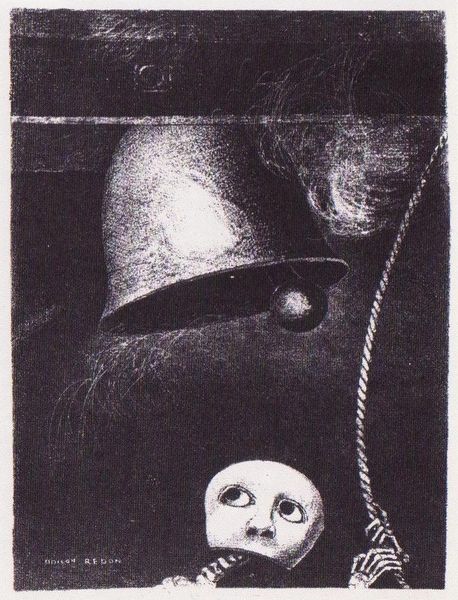
Lenor appears in front of the black sun of melancholy 1882
0:00
0:00
Dimensions: 19.2 x 15.8 cm
Copyright: Public domain
Curator: My first thought? Ghostly, spectral… she’s like a memory fading into the gloom. Editor: It's incredible, isn’t it? This is Odilon Redon’s "Lenor Appears in Front of the Black Sun of Melancholy," an ink drawing created in 1882. What’s fascinating is how Redon, associated with Symbolism, engages with Romantic ideals of feeling while challenging Enlightenment rationalism. Curator: A “black sun of melancholy”… I can’t help but find some delicious irony there, given that, literally speaking, suns should give life, and the very opposite is communicated. Do we know who Lenor was to Redon? Was this some muse that he decided to portray or a complete figment of his imagination? Editor: Lenor is, ostensibly, a reference to Edgar Allan Poe’s poem, "The Raven." And it’s precisely this relationship that reveals the anxieties prevalent in late 19th-century France. Redon critiques the political climate of the time while addressing universal issues through subjective symbols and psychological explorations. The hooded figure invites interpretations of mourning and disillusionment. The Black Sun then stands in for obscured visions, reflecting socio-political instability. Curator: Yes, I suppose you can say she embodies not just personal sadness but collective… existential unease, but isn’t that the gift of such Symbolist art—that it speaks so loudly about inner life as a matter of public record. That being said, it would be so easy to imagine her stepping out from this artwork to become something else. I mean, what could this work teach artists today about conveying that sort of… potential? Editor: Perhaps to embrace ambiguity. Redon's drawing teaches contemporary artists to probe individual states to question the structures shaping social experiences, especially where power is concerned. By combining reality with dreamlike figments, it encourages narratives that challenge norms and advocate intersectionality. Curator: I will try to use ambiguity in my work to instigate the questions you refer to in your comment. Well, on that note, thanks for helping me decode these dense textures and layered implications. Editor: My pleasure! It’s been an illuminating encounter with the ghost of art’s past!
Comments
No comments
Be the first to comment and join the conversation on the ultimate creative platform.
